
Westphalia is a region of northwestern Germany and one of the three historic parts of the state of North Rhine-Westphalia. It has an area of 20,210 square kilometres (7,800 sq mi) and 7.9 million inhabitants.

North Rhine-Westphalia or North-Rhine/Westphalia, commonly shortened to NRW, is a state (Land) in Western Germany. With more than 18 million inhabitants, it is the most populous state in Germany. Apart from the city-states, it is also the most densely populated state in Germany. Covering an area of 34,084 km2 (13,160 sq mi), it is the fourth-largest German state by size.

The Sieg is a river in North Rhine-Westphalia and Rhineland-Palatinate, Germany. It is a right tributary of the Rhine.

The Inde is a small river in Belgium and in North Rhine-Westphalia, Germany
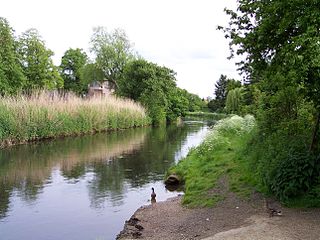
The Niers is a river in Germany and the Netherlands, a right tributary of the river Meuse. Its wellspring is near Erkelenz, south of Mönchengladbach, in North Rhine-Westphalia (Germany).

The Heller is a 30 km long river in western Germany. It is a left tributary of the Sieg. The source is located near Haiger in Hesse. It flows through Burbach and Neunkirchen in North Rhine-Westphalia. It flows into the river Sieg in Betzdorf, Rhineland-Palatinate. Its basin area is 204 km².

The Düssel is a small right tributary of the river Rhine in North Rhine Westphalia, Germany. Its source is east of Wülfrath. It flows westward through the Neander Valley where the fossils of the first known to be Neanderthal man were found in August 1856. At Düsseldorf it forms a river delta by splitting into four streams, which all join the Rhine after a few kilometres. The Nördliche Düssel flows through the Hofgarten and passes under the Golden Bridge.

The Kyll, noted by the Roman poet Ausonius as Celbis, is a 128-kilometre-long (80 mi) river in western Germany, left tributary of the Moselle. It rises in the Eifel mountains, near the border with Belgium and flows generally south through the towns Stadtkyll, Gerolstein, Kyllburg and east of Bitburg. It flows into the Moselle in Ehrang, a suburb of Trier.

The Agger is a river in Germany, a right tributary of the Sieg in North Rhine-Westphalia. It is 69.5 kilometres (43.2 mi) long. Its source is in the Sauerland hills, near Meinerzhagen. It winds through the towns Engelskirchen, Overath and Lohmar. Near Siegburg the Agger flows into the Sieg.

NRW.INVEST is the economic development agency of the German State of North Rhine-Westphalia (NRW). It deals with the acquisition of and support for foreign investors and the international marketing for NRW as a business location. As One-Stop-Agency for foreign investors, NRW.INVEST supports mainly international companies with their investment projects and settlements in NRW throughout the entire settlement process. NRW.INVEST maintains two subsidiaries in Japan and the United States as well as thirteen representative offices in China, India, Israel, South Korea, Poland, Russia, Turkey and the United Kingdom. The sole shareholder of NRW.INVEST is the State of North Rhine-Westphalia.

Emmer is a river of Lower Saxony and North Rhine-Westphalia, Germany. It flows into the Weser in Emmerthal.
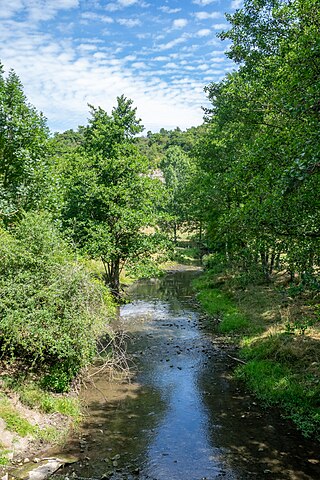
Eggel is a river in North Rhine-Westphalia, Germany, and a left tributary of the Diemel. Its lower section forms the boundary between North Rhine-Westphalia and Hesse.

The Itter is a river of Hesse and of North Rhine-Westphalia, Germany. It is a left tributary of the Diemel in the Waldeck-Frankenberg district in Hesse and in the Hochsauerland district in North Rhine-Westphalia. It flows through Willingen.

The Twiste is a river of Hesse and of North Rhine-Westphalia, Germany. It is the most important tributary of the Diemel, which it joins in Warburg. Its largest tributaries are the Erpe, Watter, Aar and Wande.
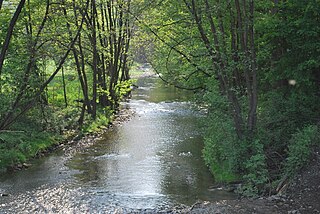
Röhr is a river of North Rhine-Westphalia, Germany. It is a left tributary of the Ruhr river, itself a tributary of the Rhine. It flows into the Ruhr in Arnsberg-Hüsten.
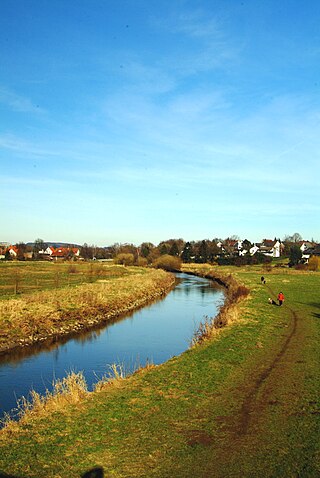
Aa is a river of North Rhine-Westphalia, Germany. It is a left tributary of the Werre, which it joins in Herford. It is formed by the confluence of two small streams in Bielefeld-Milse. In its upper part, it is called Johannisbach.
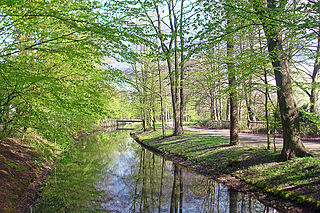
Dalke is a river of North Rhine-Westphalia, Germany. It flows into the Ems near Gütersloh.

Dhünn is a 40 km (25 mi)-long river located in North Rhine-Westphalia, Germany. Its main source is near Wipperfürth in the Bergisches Land area. It runs in a south-westerly direction, and its mouth into the river Wupper is near Leverkusen, appr. 10 km (6.2 mi) north of Cologne.
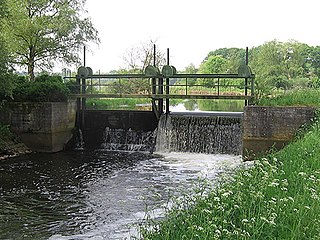
Wapelbach is a river of North Rhine-Westphalia, Germany. It flows into the Dalke west of Gütersloh.




















